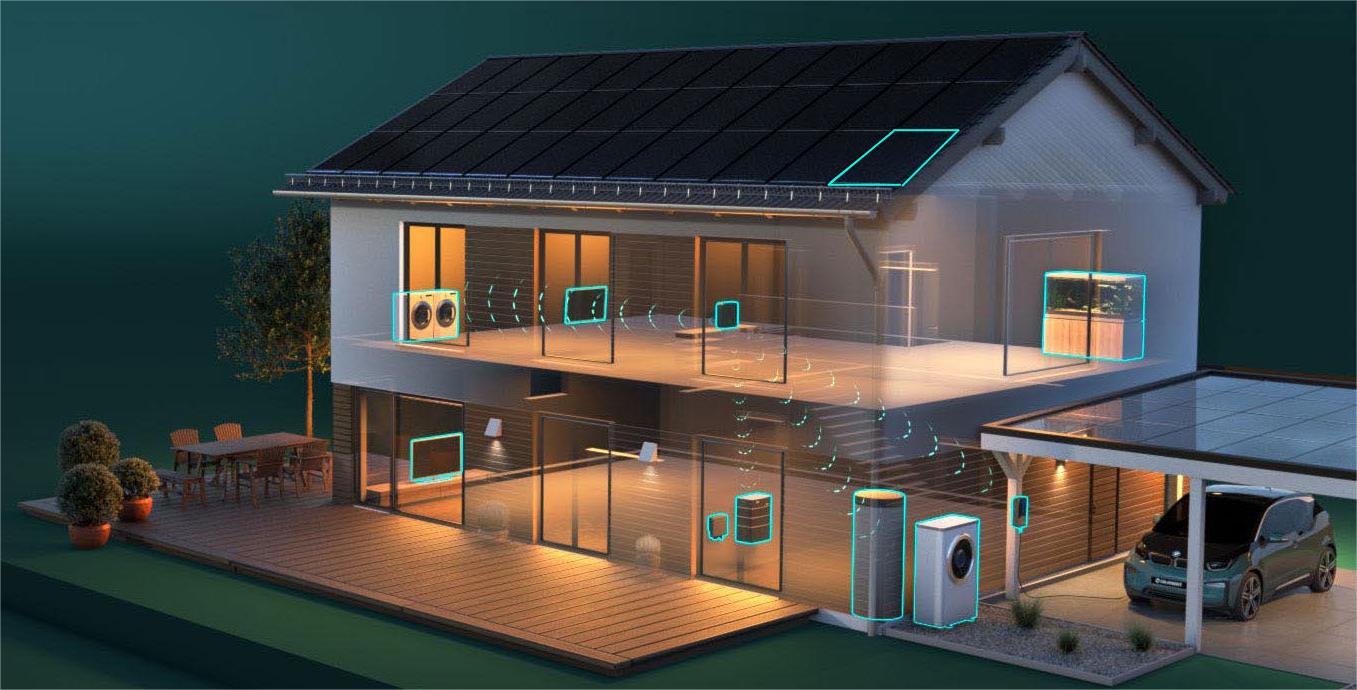In today's push for renewable energy, home solar energy systems are becoming an increasingly popular option. These systems utilize solar energy to convert light energy into electricity, providing clean, renewable energy for the home. In this article, we'll cover the workings and components of a home solar system to help us gain a deeper understanding of how it works.

Solar Module
The centerpiece of a home solar system is a photovoltaic module, which usually consists of multiple solar panels. These solar modules convert sunlight into direct current electrical energy through the photovoltaic effect in semiconductor materials. When sunlight hits the solar panels, the light energy is absorbed by the photovoltaic material and electrons are excited. These free electrons flow through an external circuit to form a DC current. Solar panels need to be secured and placed by solar racking, and residential solar system options are primarily tile roof mounting system,tilt solar racking and so on.
Inverters:
DC electrical energy cannot be supplied directly for use by household appliances and the grid, so an inverter is needed to convert DC to AC power. An inverter is an important part of a solar system that converts the DC energy generated from the PV modules into AC energy that meets the requirements of home appliances and the grid.
Battery system (optional):
Some home solar systems are also equipped with a battery system for storing excess solar power. When the solar system produces more electricity than the home needs, the excess energy is stored in a battery. At night or during bad weather, the home can draw its electrical supply from the battery system. This provides system independence and reliability.
Grid connection:
Most home solar systems are connected to the electric grid in a configuration known as "grid-tied PV". When the solar system produces more electricity than the home needs, the excess electricity is fed back into the grid. This is referred to as "feed-in" or "grid reversal". When the solar system is unable to meet the home's needs, electricity is automatically taken from the grid to ensure that the home's electricity needs are met.
Monitoring Systems:
Many home solar systems are also equipped with a monitoring system for real-time monitoring of system performance and power generation. A monitoring system allows a home to see how much power the solar system is generating, its power output, and how well the system is operating. This helps improve system efficiency and identify potential malfunctions or problems in a timely manner.
In conclusion, residential solar systems work by using solar energy to convert light energy into electricity. Photovoltaic modules convert sunlight into direct current (DC) electrical energy, and an inverter converts the DC to AC to supply household electrical equipment. The battery system stores excess electricity and connects to the grid to complement and reverse the flow of electricity. A monitoring system allows households to monitor system performance and power generation in real time to ensure proper operation and optimize efficiency. Choosing the right solar system is very important to increase energy production. At the same time, solar racking, as a necessary component of a solar system, choosing a quality solar racking manufacturer plays a key role in the performance, stability and longevity of the solar system.POWERACK has years of experience in racking, so please feel free to contact us. With a home solar system, we can reduce our dependence on traditional energy sources, realize the use of clean, renewable energy, and contribute to environmental protection.